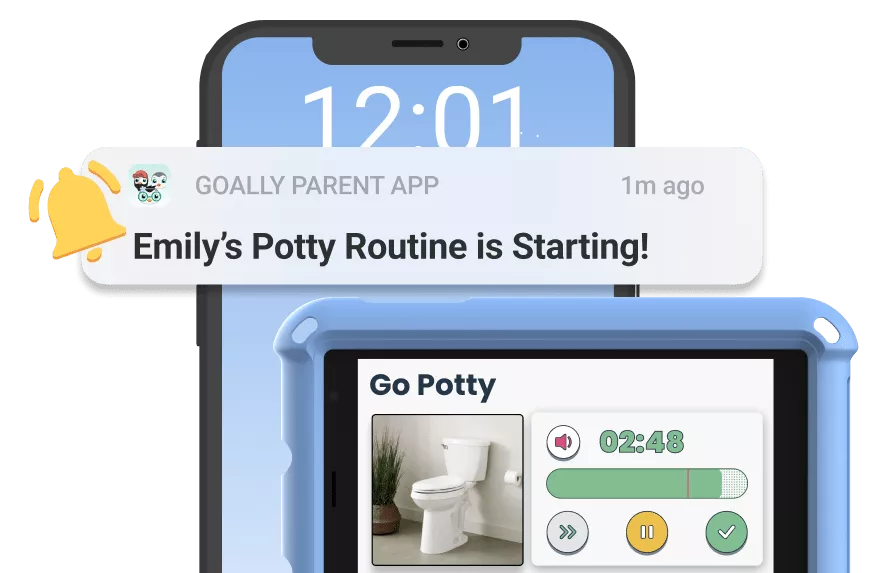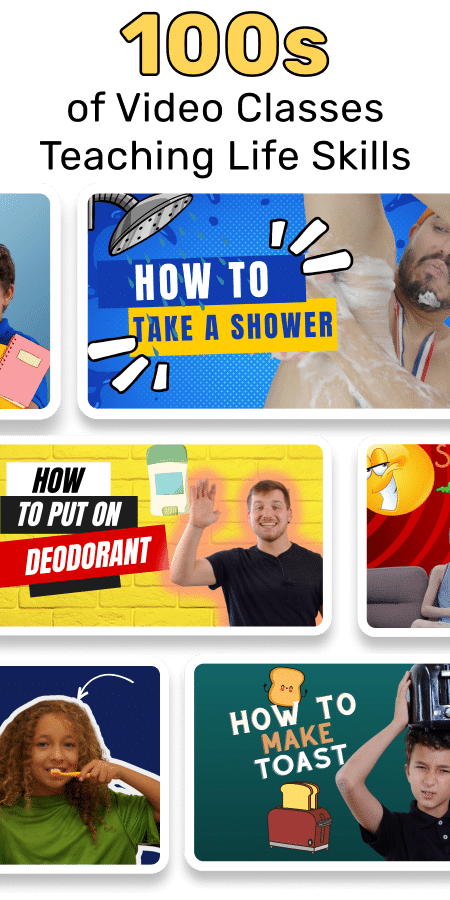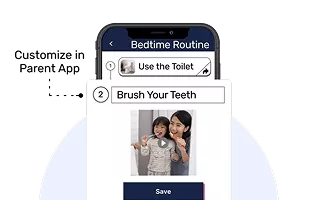Keeping kids active at home can be a challenge, especially when you’re juggling work, school, and everyday life. I’ve seen how much kids love to move, and I know how important it is for their physical and mental health. Exercise helps kids burn off energy, build strength, and develop healthy habits that can last a lifetime. In this guide, I’ll share simple, fun exercises that you can do with your kids at home. These activities are designed to keep them moving, entertained, and healthy—all from the comfort of your living room.
Table of Contents
Step 1: Start with a Warm-Up
Before jumping into any exercise routine, it’s crucial to start with a warm-up. I always emphasize the importance of getting the body ready for physical activity to prevent injuries and to prepare the muscles for exercise. A good warm-up for kids should include light cardio, like jogging in place, and dynamic stretches, like arm circles or leg swings. This helps increase blood flow to the muscles and gets the heart rate up gradually.
A warm-up doesn’t have to be boring—turn it into a game! For example, you can play “Follow the Leader” where you lead your kids through different movements. Or, put on some fun music and have a quick dance party to get those muscles moving. A five-minute warm-up is usually enough to get their bodies ready for the exercises ahead.
Step 2: Incorporate Fun Cardio Activities
Cardio exercises are a great way to keep kids active and help them burn off energy. I’ve found that the key to getting kids excited about cardio is to make it fun. Instead of just running in place, try activities like “Jumping Jacks,” “High Knees,” or “Skipping.” These exercises are easy to do at home and don’t require any special equipment.
You can also create an obstacle course in your living room or backyard. Use pillows, chairs, or cones to set up a path for your kids to navigate. Have them jump over obstacles, run around chairs, and crawl under tables. This not only gets their heart rate up but also keeps them engaged and entertained. Remember, the goal is to keep them moving and having fun!
Step 3: Build Strength with Bodyweight Exercises
Strength training is just as important as cardio for kids. It helps build strong muscles and bones, which are essential for their overall health. I recommend starting with simple bodyweight exercises that are safe and effective for kids. Exercises like “Push-Ups,” “Squats,” and “Planks” are great options. These exercises can be modified to suit different fitness levels and can be done anywhere in the house.
For example, you can start with wall push-ups for younger kids or those who are new to strength training. As they get stronger, they can progress to full push-ups on the floor. Make it fun by setting challenges, like seeing how many push-ups they can do in a minute, or who can hold a plank the longest. This not only builds strength but also encourages a bit of friendly competition.
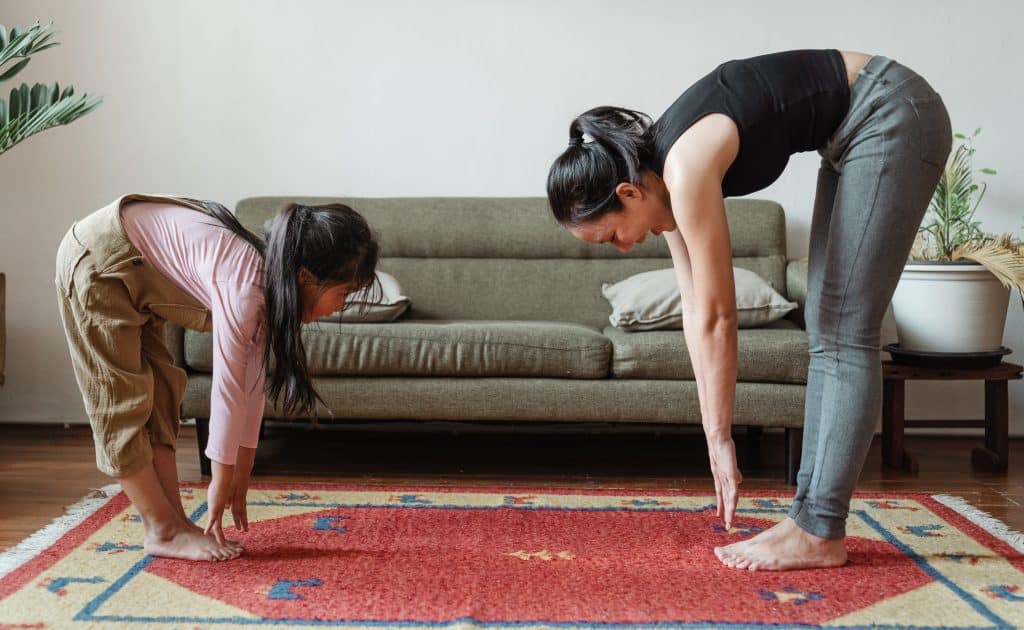
Read more: Autism and Exercise
Step 4: Encourage Flexibility with Stretching Exercises
Flexibility is an important component of physical fitness, and it’s something that kids can improve with regular practice. I always include stretching exercises in any workout routine for kids. Stretching helps improve flexibility, reduces the risk of injury, and can be a calming activity to wind down after more intense exercises.
Simple stretches like “Toe Touches,” “Butterfly Stretch,” and “Cat-Cow Pose” are great for kids. Encourage them to hold each stretch for about 15-30 seconds and to breathe deeply while they stretch. You can even turn stretching into a game by pretending to be different animals—reach for the sky like a giraffe or stretch your back like a cat. This makes stretching fun and helps keep kids engaged.
Step 5: Incorporate Balance and Coordination Exercises
Balance and coordination are key skills that kids need to develop, and there are plenty of fun ways to incorporate these exercises at home. I like to use activities that challenge kids to balance on one foot, walk on a line, or catch and throw a ball. These exercises not only improve balance and coordination but also help with focus and concentration.
Try games like “Simon Says” with a focus on balance, such as “Simon says stand on one foot” or “Simon says hop on one leg.” You can also create a simple balance beam at home using a piece of tape on the floor, and have your kids walk along it without stepping off. These activities are fun and help kids improve their motor skills in a playful way.
Step 6: Make Time for Cool Down and Relaxation
Just as important as warming up is cooling down after exercise. I always finish a workout with a cool-down period to help the body recover and to prevent muscle soreness. A cool-down for kids should include light stretching and deep breathing exercises. This helps bring their heart rate down gradually and gives them a chance to relax after being active.
You can guide your kids through some simple yoga poses, like “Child’s Pose” or “Downward Dog,” which are great for calming the mind and body. Encourage them to take slow, deep breaths while they stretch. A five-minute cool-down is usually enough to help them unwind and transition to their next activity.
Step 7: Keep the Routine Fun and Varied
The key to keeping kids engaged in exercise is to make it fun and varied. I recommend mixing up the routine regularly to keep things interesting. You can alternate between different types of exercises, such as cardio one day, strength training the next, and a fun dance workout another day. This not only keeps them excited about exercise but also helps work different muscle groups and improves overall fitness.
Consider incorporating themed workout days or using online videos to introduce new exercises. For example, you can have a “Superhero Workout” where they pretend to be their favorite hero while doing strength exercises. Or, use a dance video to get them moving to their favorite music. The more variety you include, the more likely they are to stay active and enjoy exercising at home.
Goally | 100+ Streaming Video Classes
Does your child need some extra guidance on building essential life skills? Goally’s skill building tablet for kids includes a TV app that has the most robust video library of skills training videos for kids. Ranging from content like “How to Brush Your Teeth” to “How to Make Friends at School,” we have dozens of interactive video lessons for kids with thinking and learning differences.
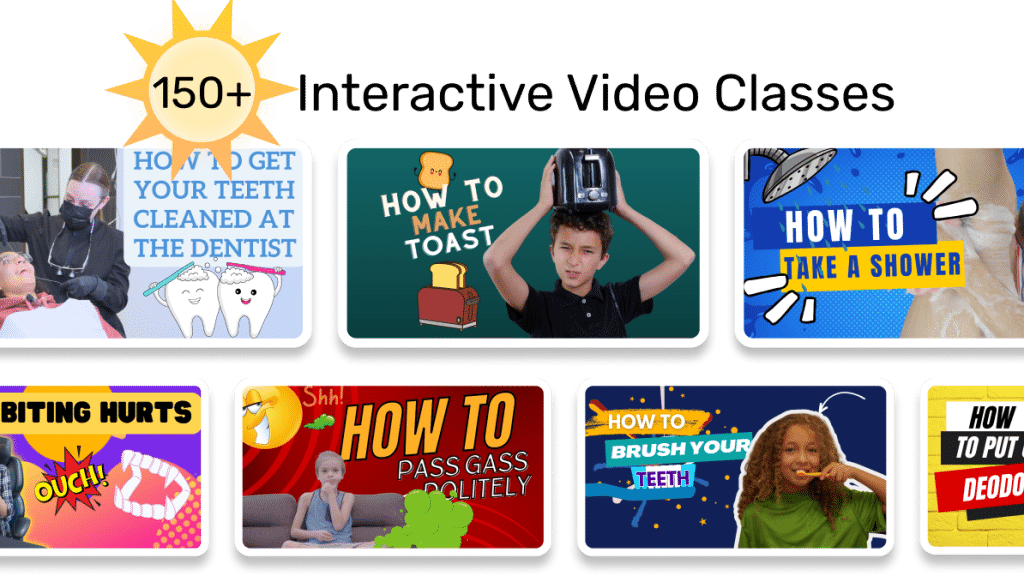
HERE’s a video explaining how to works.
Keeping kids active at home doesn’t have to be complicated. By incorporating these simple, fun exercises at home for kids into your routine, you can help your kids stay healthy, happy, and full of energy. Remember, the goal is to keep it fun and engaging so that exercise becomes a regular part of their daily lives.
Helpful Resources
FAQ’s About Exercises at Home for Kids
What is Goally's solution for exercise at home for kids?
Goally offers interactive video classes that break down exercises into easy, manageable steps for kids to follow at home.
How does Goally help kids learn to exercise at home?
Goally uses task analysis to provide step-by-step instructions in its video classes, making it easy for kids to learn and perform exercises at home.
Can Goally's video classes help my child exercise independently at home?
Absolutely! Goally's video classes are designed to teach kids how to exercise independently at home, promoting a healthy and active lifestyle.
What types of exercises does Goally teach for kids to do at home?
Goally teaches a variety of exercises suitable for kids, including bodyweight exercises, aerobic exercises, and balance exercises.
How does Goally make exercise at home for kids fun and engaging?
Goally turns exercise into a fun activity by breaking it down into simple steps, using engaging visuals in its video classes, and incorporating elements of play.
This post was originally published on 02/16/2023. It was updated on 08/16/2024.
Emily is a seasoned blog writer for Goally, leveraging her extensive background in child psychology and special education to provide valuable insights and resources for parents. Her commitment to understanding and addressing the unique needs of these children, combined with her expertise in educational strategies, makes her a credible and empathetic voice for families.

